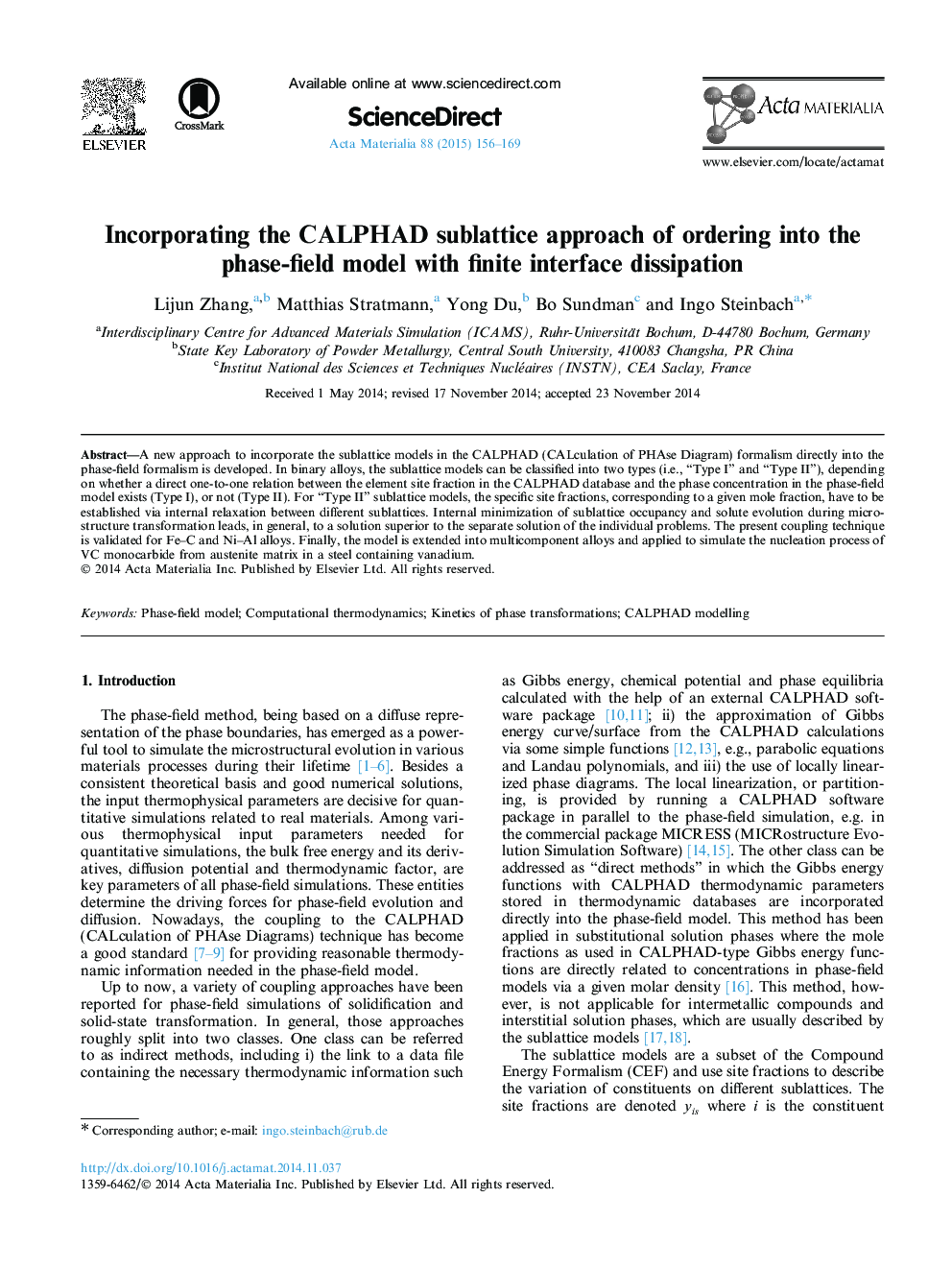| Article ID | Journal | Published Year | Pages | File Type |
|---|---|---|---|---|
| 7880390 | Acta Materialia | 2015 | 14 Pages |
Abstract
A new approach to incorporate the sublattice models in the CALPHAD (CALculation of PHAse Diagram) formalism directly into the phase-field formalism is developed. In binary alloys, the sublattice models can be classified into two types (i.e., “Type I” and “Type II”), depending on whether a direct one-to-one relation between the element site fraction in the CALPHAD database and the phase concentration in the phase-field model exists (Type I), or not (Type II). For “Type II” sublattice models, the specific site fractions, corresponding to a given mole fraction, have to be established via internal relaxation between different sublattices. Internal minimization of sublattice occupancy and solute evolution during microstructure transformation leads, in general, to a solution superior to the separate solution of the individual problems. The present coupling technique is validated for Fe-C and Ni-Al alloys. Finally, the model is extended into multicomponent alloys and applied to simulate the nucleation process of VC monocarbide from austenite matrix in a steel containing vanadium.
Related Topics
Physical Sciences and Engineering
Materials Science
Ceramics and Composites
Authors
Lijun Zhang, Matthias Stratmann, Yong Du, Bo Sundman, Ingo Steinbach,
